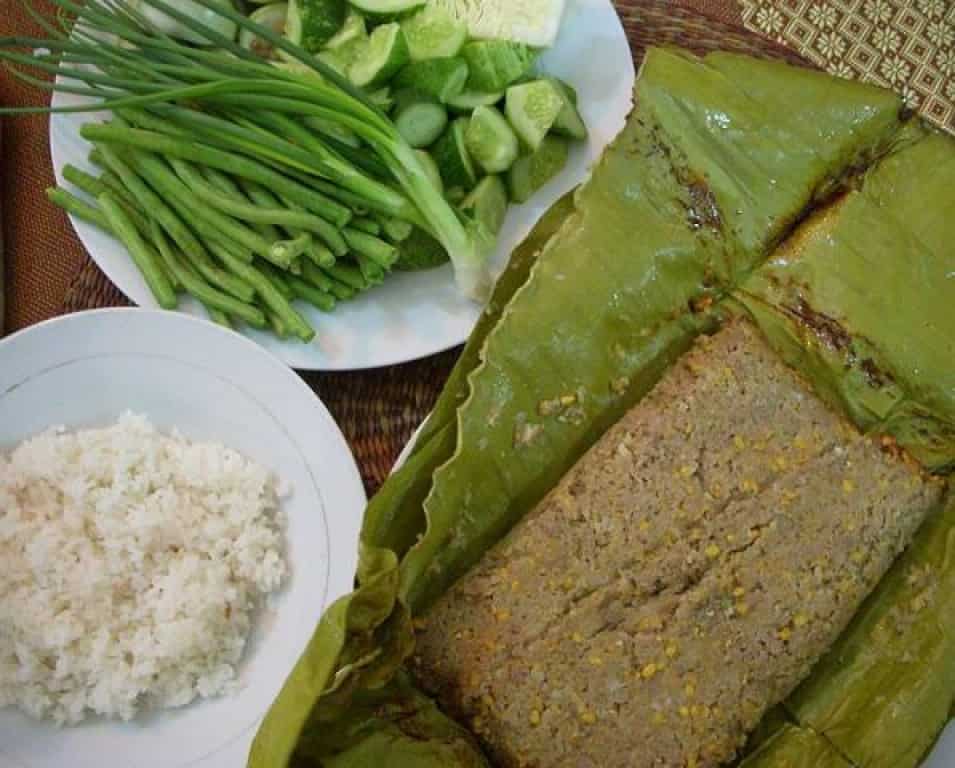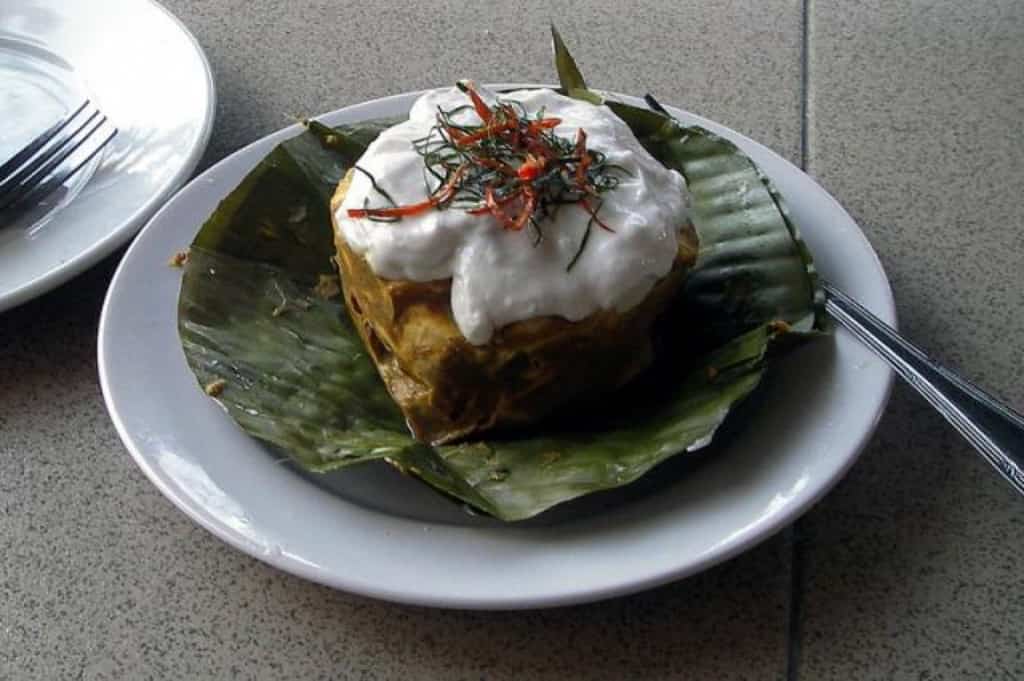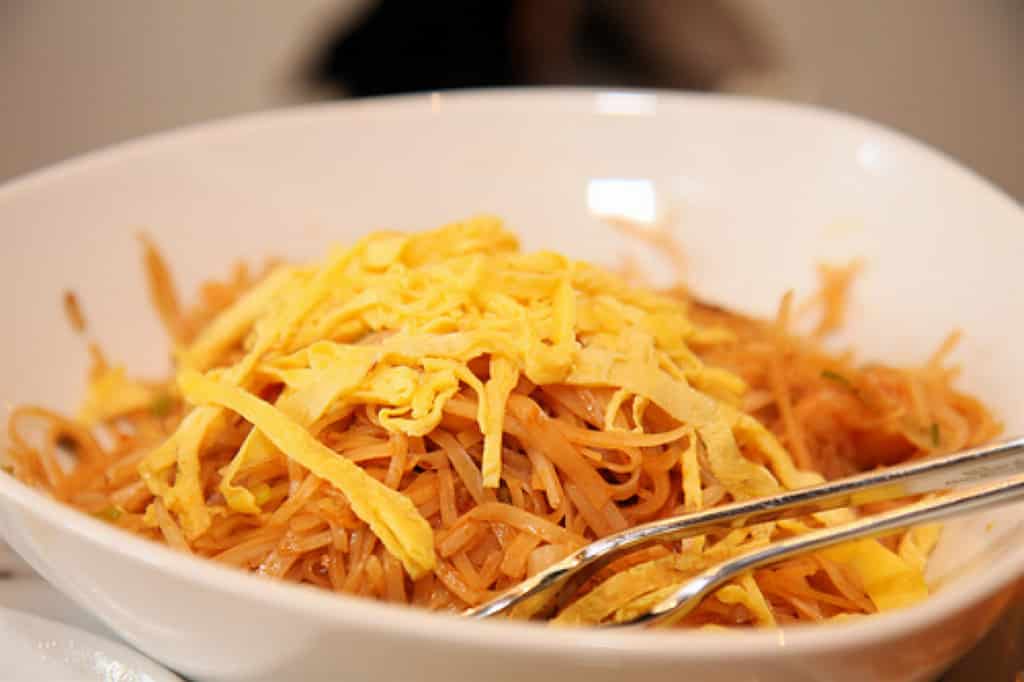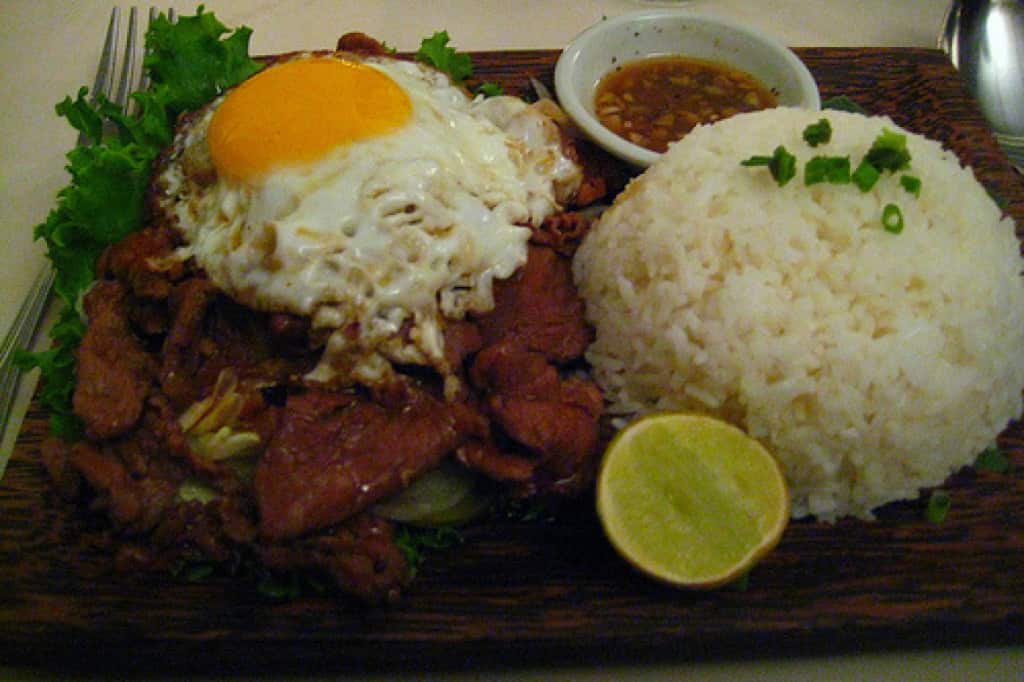While not as spicy or as varied as food from neighbouring Thailand, Malaysia or Vietnam, Khmer food (aka Cambodian cuisine) is tasty and cheap and is invariably accompanied by rice (or occasionally noodles).
Thai and Vietnamese characteristics can be found in Khmer food, although Cambodians love a stronger sour taste in their dishes, especially through the addition of prahok, the famous Khmer fish paste (although for most foreigners this is most definitely an acquired taste!).
In addition to Khmer food, there are large number of Chinese restaurants, especially in Phnom Penh and large provincial centers. Like other Asian countries, Cambodian street food is very popular. Many of the dishes mentioned below can be enjoyed at the street food markets in Siem Reap, Phnom Penh and other cities in Cambodia.
We highly recommend joining a food tour while in Cambodia to learn more about the different cuisines and how to eat them. Here’s one in Phnom Penh and one in Siem Reap.

Traditional Cambodian food
Typical Khmer dishes which are palatable to westerners include:
- Amok – The most popular Cambodian dish with travelers. A coconut milk curry dish less spicy than those found in Thailand. Amok is usually made with chicken, fish, or shrimp, plus some vegetables. It is sometimes served in a hollowed-out coconut with rice on the side. Quite delicious.

- K’tieu (Kuytheav) – A noodle soup generally served for breakfast. Can be made with pork, beef or seafood. Flavorings are added to the customers taste in the form of lime juice, chili powder, sugar and fish sauce.

- Somlah Machou Khmae – A sweet and sour soup made with pineapple, tomatoes and fish.
- Bai Saik Ch’rouk – Another breakfast staple. Rice (bai) with pork meat (sec trouk) often barbequed. Very tasty and served with some pickled vegetables.
- Saik Ch’rouk Cha Kn’yei – Pork fried with ginger. Ginger is relatively commonly used as a vegetable. This tasty dish is available just about everywhere.
- Lok lak – Chopped up beefsteak cooked quickly. Probably a holdover from the days of French colonization. Served with lettuce and onion, and often with chips.

- Mi / Bai Chaa – Fried noodles or rice. Never particularly inspiring, but a good traveller’s staple.
- Trey Ch’ien Chou ‘Ayme – Trey (fish) fried with a sweet chili sauce and vegetables. Very tasty. Chou ‘ayme is the phrase for “sweet and sour”.
- K’dam – Crab. Kampot in the south is famous for its crab cooked in pepper. A very tasty meal.
Khmer Dessert
Don’t forget Khmer desserts – Pong Aime (sweets). These are available from stalls in most Khmer towns and can be excellent. Choose from a variety of sweetmeats and have them served with ice, condensed milk and sugar water. A must try is the Tuk-a-loc, a blended drink of fruits, raw egg, sweetened condensed milk and ice.
There is also a wide variety of fresh fruit available from markets. The prices vary according to which fruit is in season but mangoes (around Khmer New Year, with up to 9 varieties on sale) and mangosteen (May/June) are both superb.
Other popular Khmer foods which are less palatable to westerners include pregnant eggs (duck eggs with the embryo still inside), Prahok (a fermented fish paste) and almost every variety of creepy or crawly animal (spiders, crickets, water beetles) as well as barbecued rats, frogs, snakes, bats and small birds.
Read this post to learn more about:












